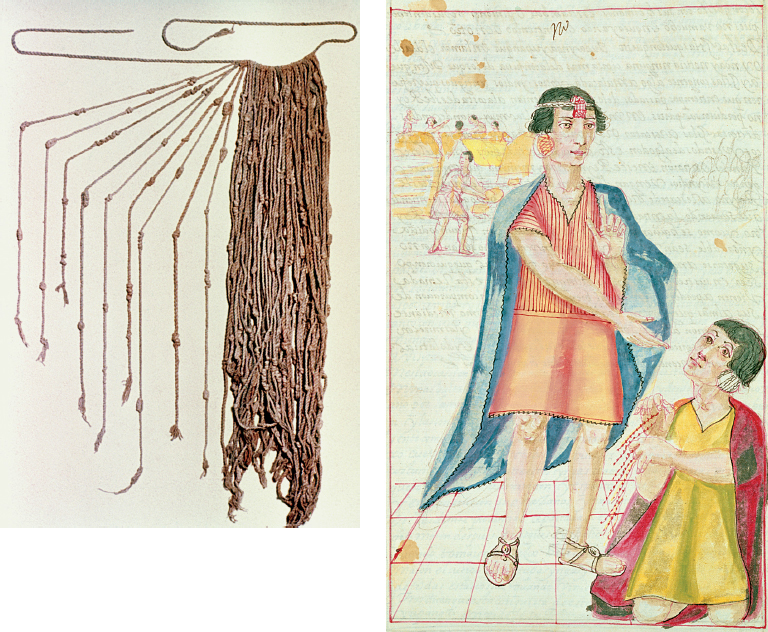How did ancient peoples of the Americas adapt to, and adapt, their environment?
LLike people everywhere, civilizations of the Americas interpreted the meaning of the world and their place in the cosmos. They organized societies stratified not just by gender, class, and ethnicity but also by professional roles and wealth, and they adapted to and reshaped their physical and natural world. But they did all this on their own, without outside influences and within a distinct environment.
If the differences between civilizations in the Americas and other world regions are remarkable, the similarities are even more so. By studying the peoples of the Americas before their encounters with other world societies, we gain a clearer view of universal aspects of the human experience.

Inca KhipuKhipus like these (left) were used by communities and by Inca imperial officials to store and communicate data. The dyes, weaves, and knots made by their users recorded data much like contemporary binary computer storage, allowing users (like the seated person) to read information about populations, production, and tribute. (khipu: The Granger Collection, NYC — All rights reserved; illustration: from Historia y Genealogia Real de los Reyes Incas del Peru, de sus hechos, constumbres, trajes y manera de Gobierno, known as the Codice Murua [vellum], 16th century/Private Collection/The Bridgeman Art Library)